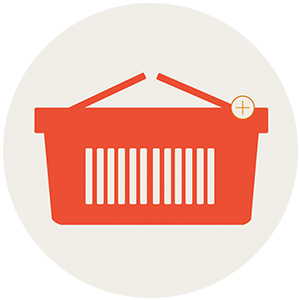The DIY nature of Shopify is part of what makes it so exciting compared to other eStore platforms. Anyone who can use a computer can spin up a Shopify site pretty quickly. The trick is getting past those initial friends and family sales to customers who have never met you. That plateau is painful. So, you try adding new tools and apps to see if they’ll boost your growth. But, no growth comes — only more subscription fees. This Lynchburg Shopify website developer sees that pattern a lot.
Why?
Shopify’s easy tools can get cluttered very quickly. Then, your shop is actually less appealing to prospective customers. It’s the opposite of what you intended.
These Mistakes Sabotage Your Shopify Store Every Time
If your Shopify Store started off with strong sales but, you’re struggling to push to the next level, there are a few areas you can review today.
1. Hard to Navigate
When I talk to clients about their site’s navigation, they often think about it like file folders in a cabinet. It’s not a stupid thought process by any means. In fact, that’s a very thoughtful way to lay out a site map and your main navigation. But, that’s not the only way to think about how people get around your site.
The “file folder” mindset forces people to go back up to the main navigation, or journey through breadcrumbs if they want to shop around your site. Many people even tell me this is intentional. They want to control the way their users experience the information on the site — forcing them to hit certain pages in a certain order.
But, that’s not the way people shop — at all.
Shopify has several ways of organizing and internally linking to your products including collections and tags. They also have tools for filtering.
Shop All
For some reason, many of my clients don’t like the “Shop All” page. It feels too random to them. But, these pages are very popular with users. Over the years, I’d say most eStores have this in their top 5 landing pages. Why? People want to see everything at a glance and then sort and filter it.
If that annoys you or you feel like it’s incoherent. I would suggest making a section with collections or categories at the top of your shop all page. Then, have good filtering options with all the products below.
Collections
Many store owners try to split their collections just one way, as categories. While it’s true that you should have categories for the “types” of products, you should also make collections that feel more like vignettes of items. While it’s not super easy to organize these on the back end of Shopify, you can make them very tidy on the front end. Make a “Shop by Category” in your parent nav and put the category collections under it. Then, have a “Shop by XX”. This could be style, scent, flavor, brand — you get the idea.
The main point is that you make it easier for people to get around your shop.
Internal Linking
Not only is internal linking great for SEO, it allows you to direct people to pages on your site that are of interest to them when viewing the product. If you’re worried this will pull them out of the page, simply set the link to open in a new tab instead of in the same window.
2. Slow Loading Time, especially on mobile
The fastest way to check your site’s speed without installing a tool is by going to https://pagespeed.web.dev/ and https://tools.pingdom.com/. If your site’s speed is more than 3 seconds, you’re really slow. Unfortunately, a lot of the popular Shopify themes are slower than 3 seconds before you even load any content. They just aren’t built for speed (or SEO). If that’s the case, you can try a page speed tool with a minifier. There are several out there and the better ones are paid. You can also hire a developer to hit your highest problem areas.
The other big culprit is image size. Many people think they should load the highest-size images possible so that they look good. Instead, you need to size it at the minimum size you can for the space. For example, most sites aren’t much wider than 2000 pixels, and most mobile devices are significantly smaller. But, you’ll often see people loading product images that are 3000 or even 6000 pixels wide. It won’t even display that size which makes it unnecessary.
Finally, there are many cool-looking tools and sections in pre-built themes. Unfortunately, many load slowly on mobile. I always ask my clients to consider removing these or using a substitute tool to speed up their site with the tradeoff of more site visitors overall.
3. Prioritizing Design over Copy
Design is important, of course. But, it can’t do all the heavy lifting to sell your products. I see this often because many Shopify site owners have no problem hiring a designer for their site but balk at hiring a copywriter to improve the language.
Not Enough Text
Decades ago, internet aficionados convinced people that no one reads anymore and people took that to mean that websites shouldn’t have much text on them. Or at least that’s what so many clients tell me. They say, “No one reads. People have a 3-second attention span. I don’t need descriptions.” That’s a woeful misinterpretation of the statistics. People read. You have a few seconds to catch their attention. But, they’ll read lengthy text as long as it’s well-written and well-organized. Customers crave solid information during the decision-making process. It’s just that they skim first.
If you don’t write decent descriptions, you’ll never sell.
No Subheadings
On the flip side, bad SEO tips and AI-generated text have convinced people that sheer wordiness is great. That’s not true either. You need subheadings, bullet points, and paragraph breaks — please. I’ll often come across lovely thoughtful product descriptions that aren’t skimmable because there is no hierarchy to the information.
No Clarity
Use as few words as possible to say as much as you can. A clear, simple word is better than something from a high school vocabulary test. Put down the thesaurus and use words that people use.
Beyond that, I recommend people focus in on what really matters to the customer.
No Heart
Anytime you can give a little context about why an item made it into your shop, that is important to add. It’s not the most important thing but, it adds a little heart. It’s often the only thing that makes someone shop from you right now instead of price comparing with Amazon.
4. Subpar Abandon Cart and Abandon Checkout Process
My first recommendation with this is to do a test purchase. Often, a store’s abandon cart and abandon checkout process augments over time — turning into a process that isn’t compelling. Once you experience the process, with the delays and sends in real-time, consider where it lost you.
Many are very aggressive in their timeline — hitting customers with a follow-up the same day that they abandoned the cart. That can be too soon for someone thinking of purchasing from a smaller shop.
Also, instead of feeling like you have to do a discount offer, include information about your shop and engage them in the shop small experience. Talk about who you are and what makes your products special. That can be just as compelling as free shipping in many cases.
5. Too Many Apps
It’s wild to see how many apps some store owners add to their Shopify site — and how many unnecessary subscriptions they’re paying for. As they pile up, they can complicate your site’s experience (and also ruin your load time — See #2). Look at each one and consider how much benefit you’re getting from all the extra apps. Sometimes, simpler is better.
6. Confusing Pop Ups
Pop ups feel so proactive. The idea that someone must acknowledge what you’re saying and dismiss it is attractive. Why? So much of the content on your website feels like it’s passively waiting for attention. But, I find that many Shopify store owners add to many popups or they make them conflict. Please use these sparingly (ideally only 1 on your site). If you have several ideas for pop ups, rotate through them or do an A/B test. But, if you have multiple pop ups going at once, it’s both annoying and confusing.
7. Conflicting discounts and coupons
Small shops don’t need to have multiple discounts running at the same time. First, it cheapens what you’re doing. The right customer is willing to pay for small shop prices because they understand the value of the products.
Also, it can make people feel like it’s a mistake to buy now without considering how they’re going to get the best deal. Keep it simple and people will be more likely to purchase.
8. Price/Value/Customer Mismatch
If people are complaining that your prices are too high then, you need to do a little research. I recommend getting on Google Merchant Center to start. It will show you other websites with similar visibility to yours. That gives you a good idea of whose products are showing up next to you in Google. Those are your competitors — with a catch. If your prices are higher than theirs because you have a higher-quality product, then you need to work on your branding and SEO. You’ve mistakenly positioned yourself in the wrong market.
If your prices are the same and the quality is similar then, you’re in the right market. You just need to find more of the same people who love your stuff.
9. No top-of-funnel conversion opportunity
If someone visits your site for the first time and they don’t buy, they’ll forget about you. Unless you have some lower-barrier opportunity to convert. Some people aren’t going to buy right now. But, they may be mildly interested. Give them ways to subscribe/follow/stick around with low commitment. Then, make it worth their while with great content and exclusive deals. But, please don’t spam them.
Lynchburg Shopify Website Developer
If you’re looking for help with your Shopify site, our team can help. The Shop Shop is a full service marketing agency that focuses on retail marketing for shops, artists, and makers. Basically, if you sell it online, our Lynchburg shopify website developer can help.
Understand Shopping Trends
We’re dropping our next newsletter in July 2025. Sign up for exclusive freebies, giveaways, and industry insights.


